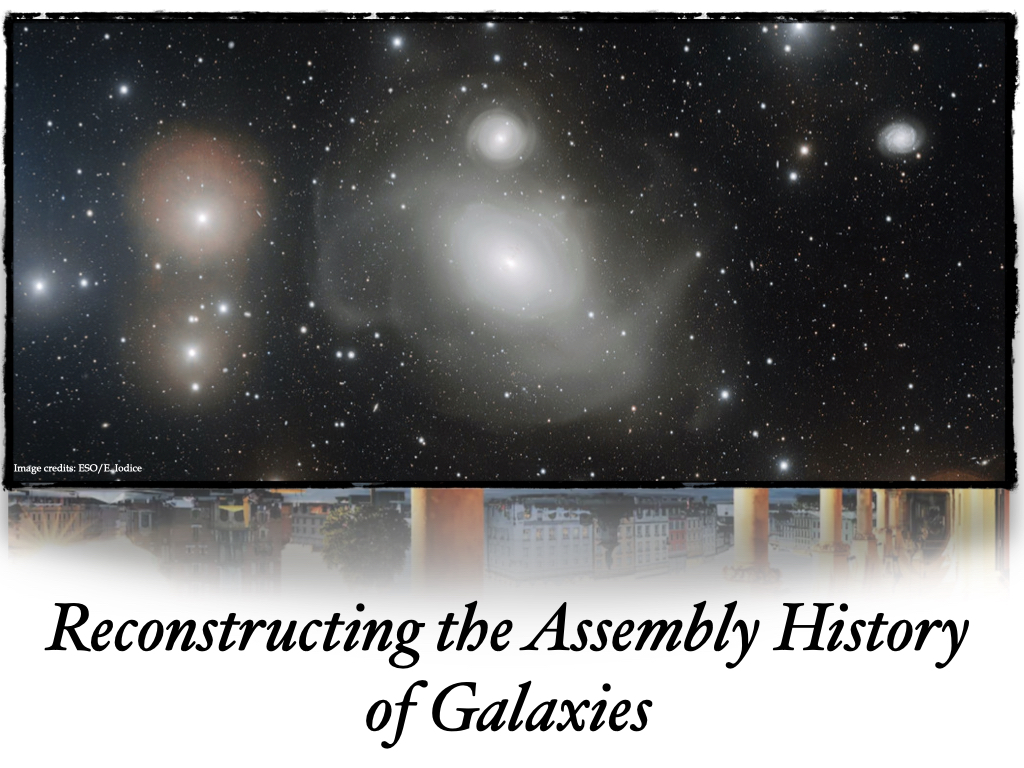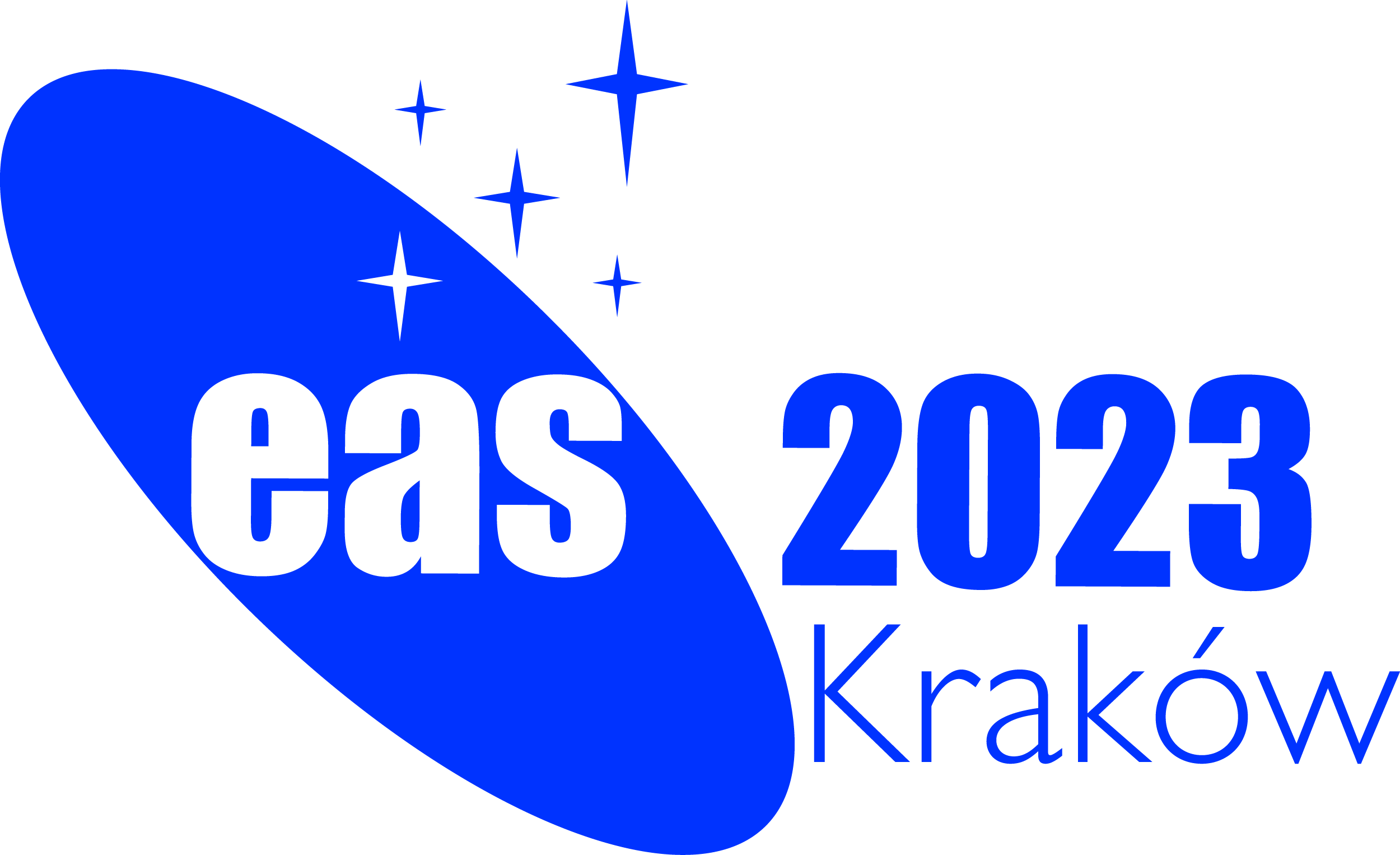Special Session SS20
13 July 2023
Reconstructing the Assembly History of Galaxies

Aims and scope
Galaxies show a large diversity of structures and stellar populations, reflecting a complex and unknown mixture of star formation episodes and hierarchical merging events in their past that are impossible to observe directly. With the exception of our own Galaxy, the primary way to study galaxy evolution has been to look at more distant galaxies at high redshift, as a window back in time. While high redshift observations yield important statistical trends for populations of galaxies, their limited spatial resolution hinders a direct link between galaxies at different cosmic epochs. The spatially-resolved views of nearby galaxies provide us with the opportunity to use their stars as fossil records to uncover the assembly of individual galaxies across cosmic time.
The emergence of Integral Field Unit (IFU) data has been transformative in many ways, including providing detailed spatially-resolved measurements of the kinematics and population properties of stars in thousands of nearby galaxies. In combination with innovative stellar population and dynamical models, these data enable us to unlock the population and dynamical "memory" of in-situ star formation episodes versus hierarchical merging events. In turn, this allows us to look back in cosmic history and uncover the assembly history of individual galaxies.
Alongside these data and modelling advances, high-resolution hydrodynamical simulations are being developed with improved implementations of unresolved baryonic physics in order to create realistic galaxies in a cosmological context. These simulations allow the star formation and merger history of galaxies to be traced through cosmic time. This helps us to decrypt the stellar population and dynamical memory of observed nearby galaxies, and to link their reconstructed assembly histories to high-redshift observations.
Programme
This special session aims to bring together junior and senior researchers working across different areas of galaxy observations, modelling and simulations for a timely discussion on the spatially-resolved reconstruction of the assembly history of galaxies. The program consists of three 90-minutes blocks addressing the following topics:
- Block 1 (09:00-10:30): observing and simulating spatially-resolved galaxy properties. Which spatially-resolved stellar properties can we robustly and optimally infer from photometric and (IFU) spectroscopic observations of real and simulated galaxies?
- Block 2 (11:00-12:30): uncovering galaxy assembly histories with stellar population and dynamical models. Which stellar population and dynamical memories of a galaxies' past can be unlocked reliably by what stellar population and dynamical models, and what are the limitations?
- Block 3 (16:45-18:15): back in time with cosmological simulations and high-redshift observations. How can the recovered assembly history of individual galaxies be (best) combined with galaxy simulations and high-redshift observations to obtain a clear window back in time?
Invited speakers
- Claudia Lagos [International Centre for Radio Astronomy Research (ICRAR), Perth, Australia]
- Alina Boecker [Instituto de Astrofísica de Canarias (IAC), Tenerife, Spain]
- Yuchen Ding [Shanghai Astronomical Observatory (SHAO), China]
- Aura Obreja [University Observatory Munich (USM), Germany]
- Arjen van der Wel [Ghent University, Belgium]
Scientific organisers
- Glenn van de Ven (chair) [University of Vienna, Austria]
- Enrica Iodice (co-chair) [INAF-Astronomical Observatory of Capodimonte, Napoli, Italy]
- Ling Zhu (co-chair) [Shanghai Astronomical Observatory (SHAO), China]
- Annalisa Pillepich (co-chair) [Max Planck Institute for Astronomy (MPIA), Heidelberg, Germany]
- Lodovico Coccato [European Southern Observatory (ESO), Garching, Germany]
- Enrico M. Corsini [University of Padova, Italy]
- Katja Fahrion [European Space Agency (ESA), Noordwijk, Netherlands]
- Jesus Falcon Barroso [Instituto de Astrofisica de Canarias (IAC), Tenerife, Spain]
- Dimitri A. Gadotti [Durham University, UK]
- Mariya Lyubenova [European Southern Observatory (ESO), Garching, Germany]
- Richard McDermid [Macquarie University, Australia]
- Ignacio Martín Navarro [Instituto de Astrofisica de Canarias (IAC), Tenerife, Spain]
- Francesca Pinna [Max Planck Institute for Astronomy (MPIA), Heidelberg, Germany]
- Marc Sarzi [Armagh Observatory, Northern Ireland]
Contact
glenn.vandeven @ univie.ac.at,
enrichetta.iodice @ inaf.it,
lzhu @ shao.ac.cn,
pillepich @ mpia-hd.mpg.de
Updated on Fri Feb 17 18:21:32 CET 2023
|

 A power cut will shut down all EAS services on Tuesday, 10 January 2017 starting at 7:30 CET.
A power cut will shut down all EAS services on Tuesday, 10 January 2017 starting at 7:30 CET.


